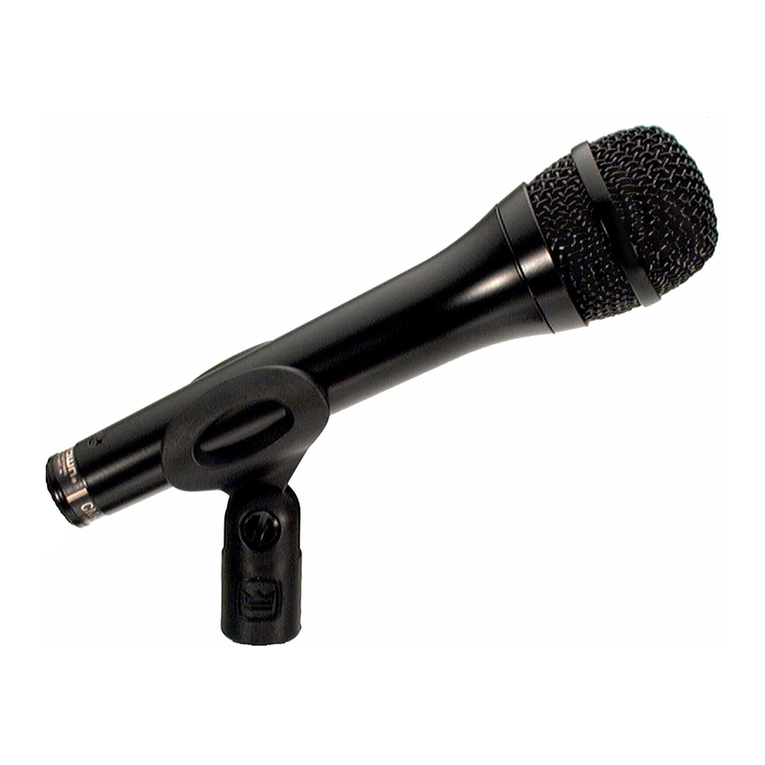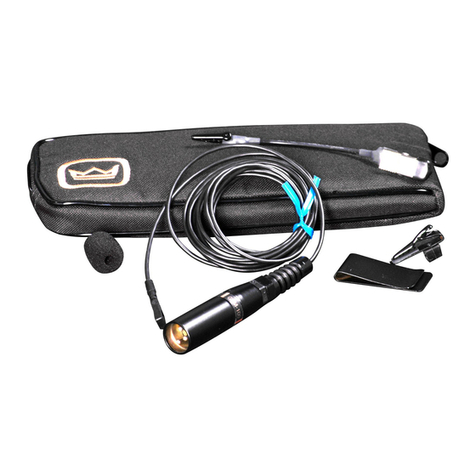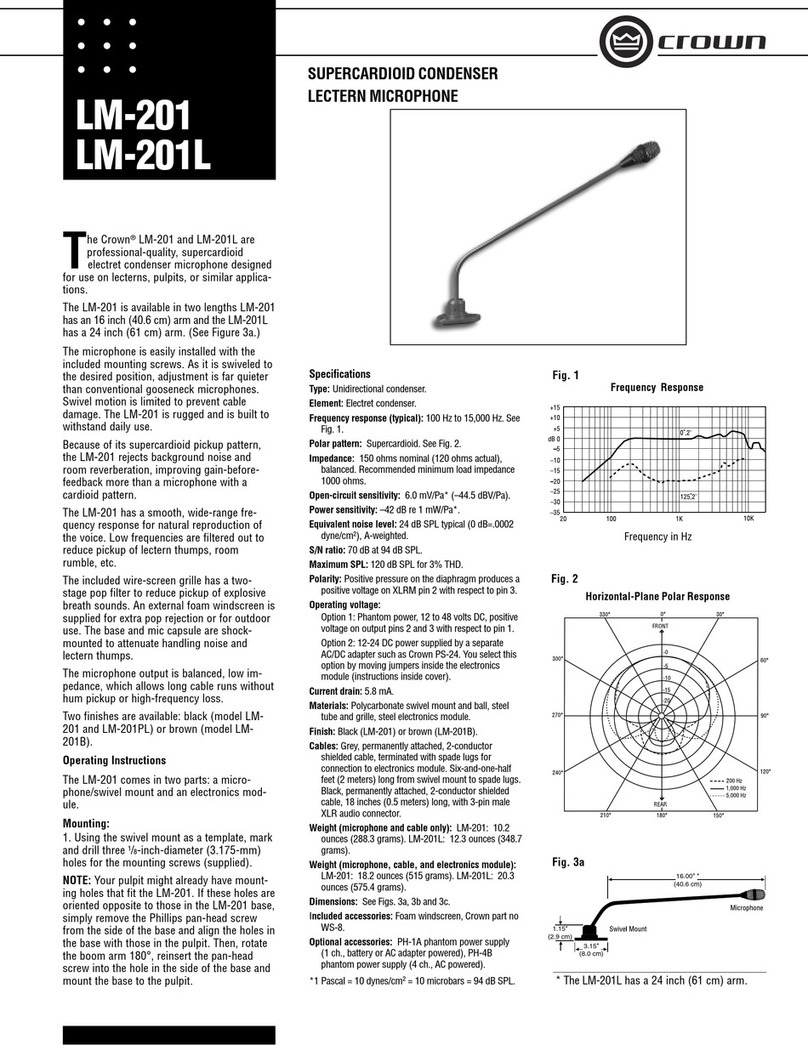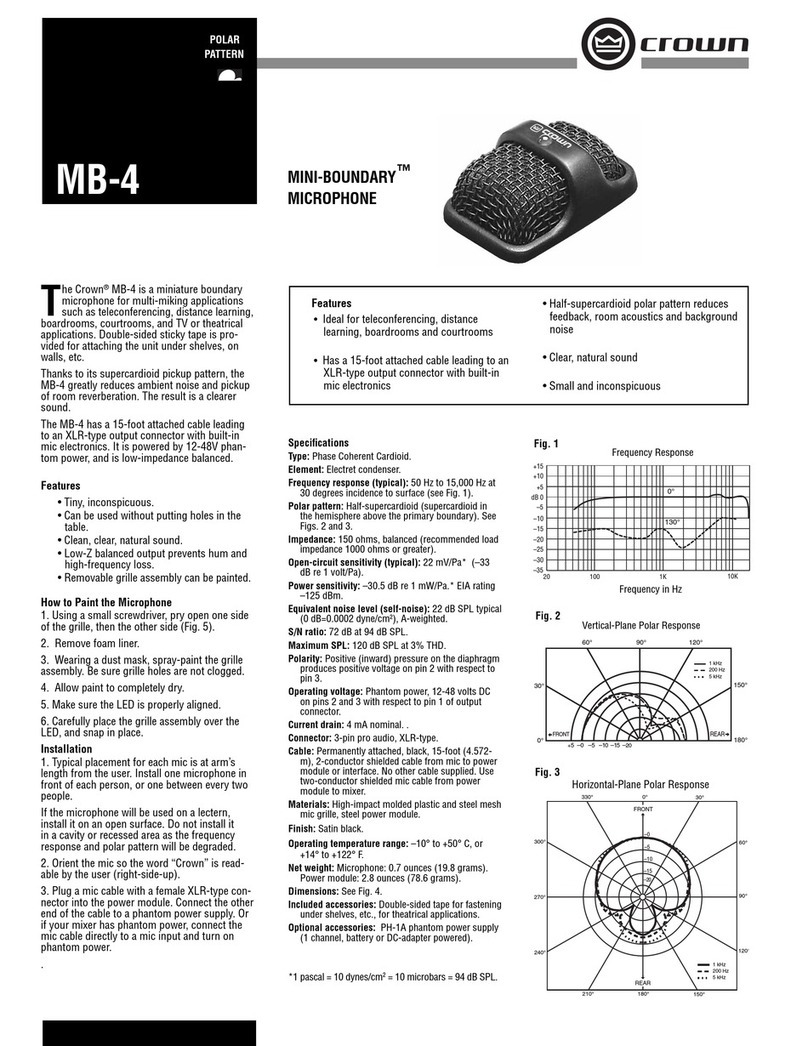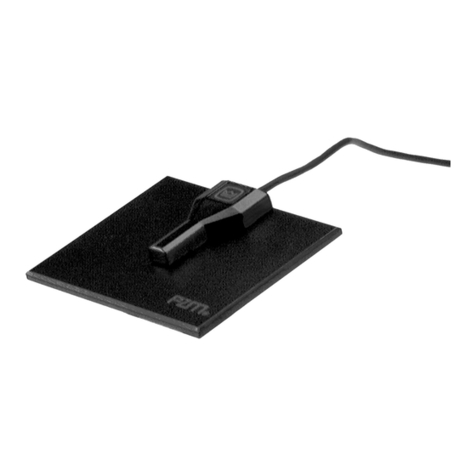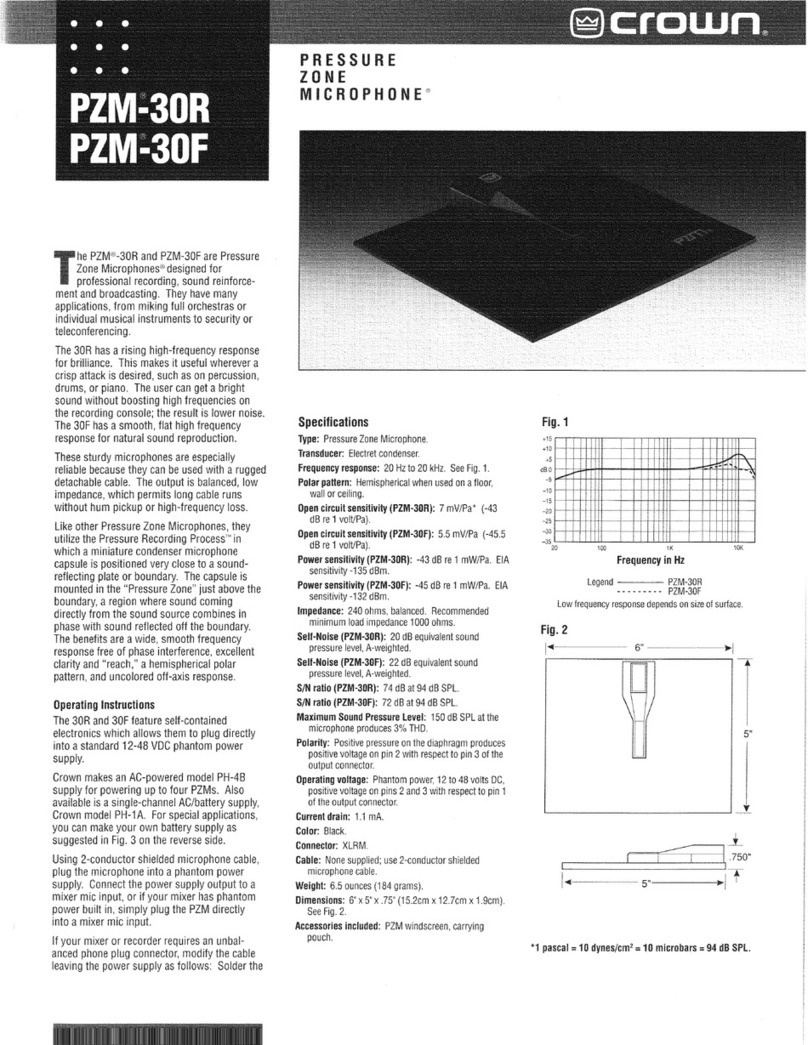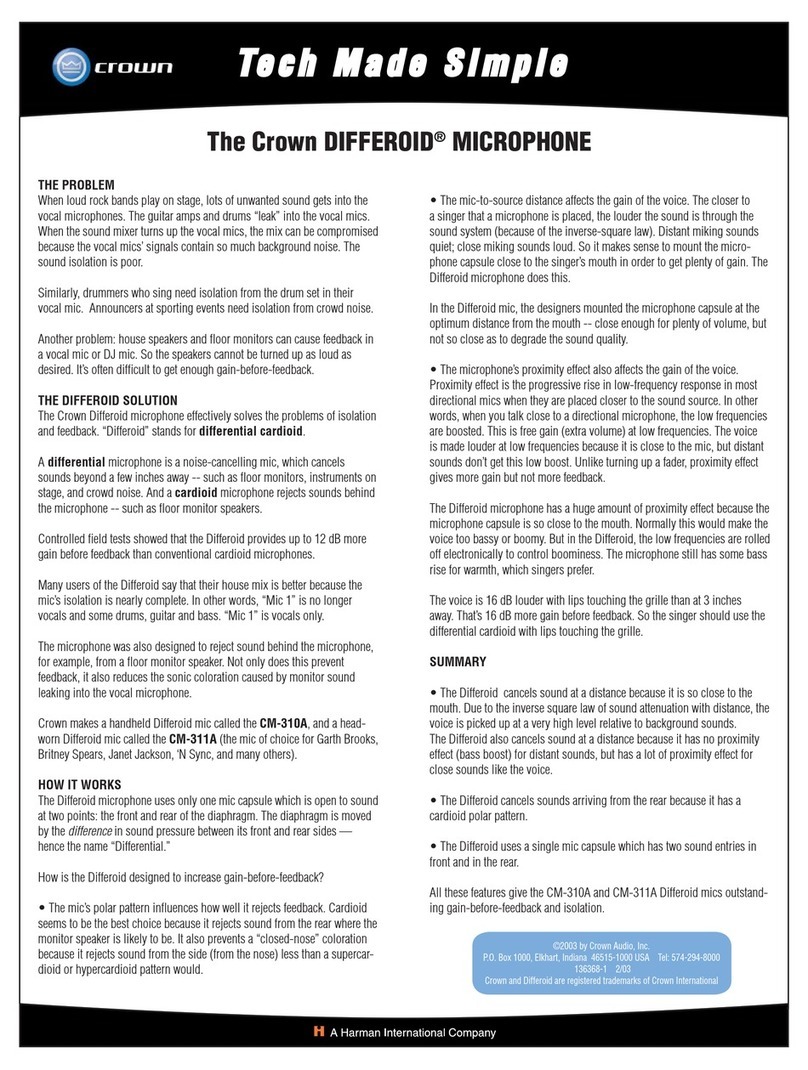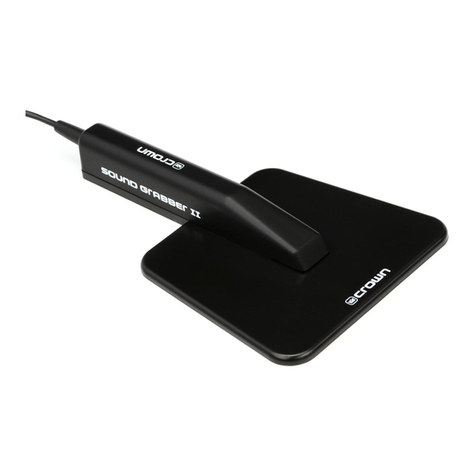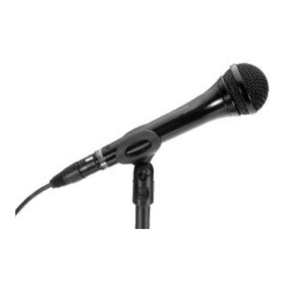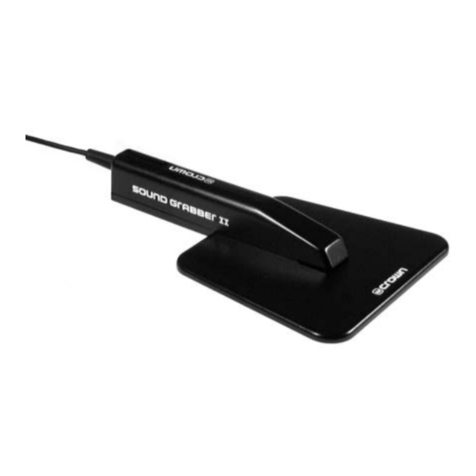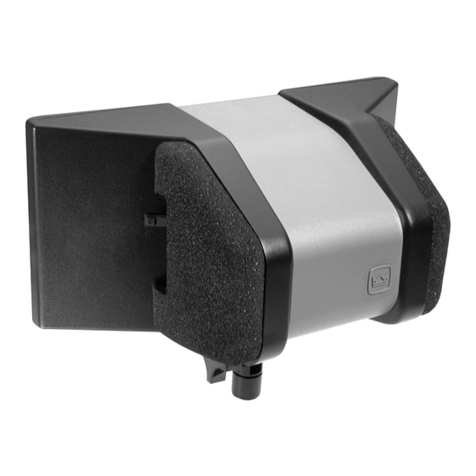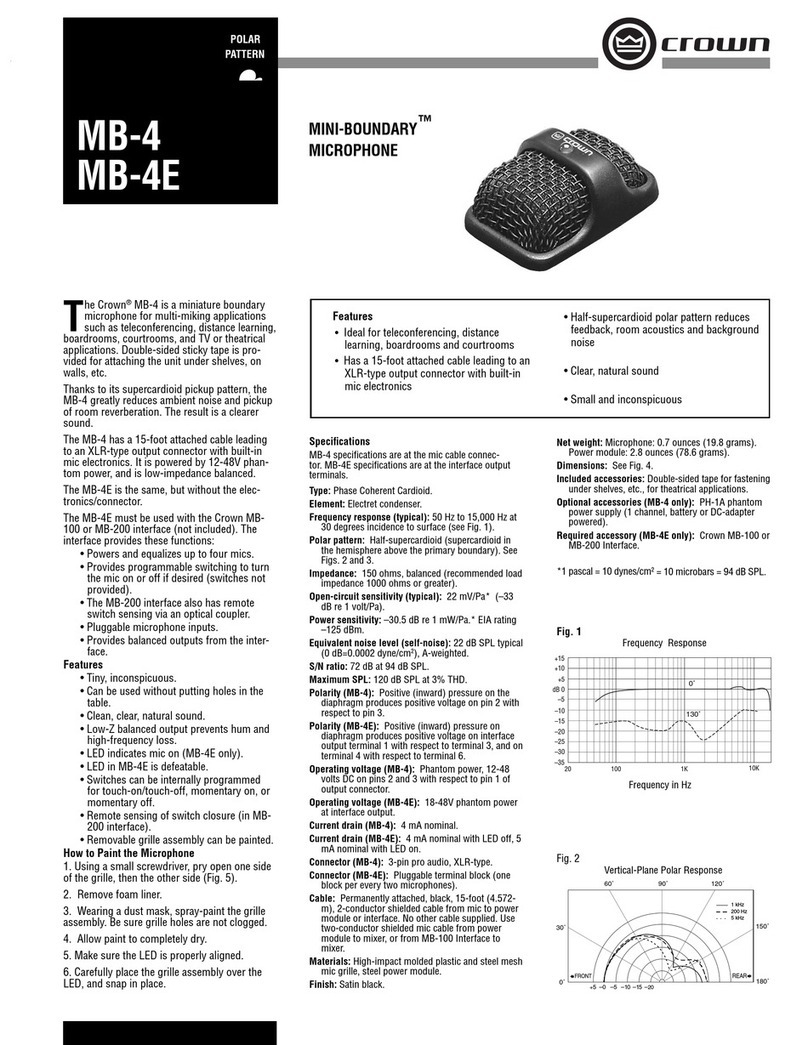
©2005 by Crown Audio, Inc.
1718 W. Mishawaka Rd, Elkhart, Indiana 46517-9439 USA Tel:
574-294-8000
136367-2 2/05
Crown and PZM are registered trademarks of Crown International
The Crown®PRESSURE ZONE MICROPHONE®(PZM®)
THE PROBLEM
Recording engineers often must place microphones near hard reflective sur-
faces. Some situations where this occurs are recording drama or opera with
microphones near the stage floor, recording a piano with the mics near the open
lid, or recording an instrument surrounded by reflective baffles.
In these situations, sound travels from the sound source to the microphone
via two paths: directly from the source to the microphone, and reflected off
the surface (Figure 1, left). Note that the reflected sound travels a longer
distance than the direct sound, so the reflected sound is delayed relative to the
direct sound. When the direct and delayed sounds combine at the microphone
diaphragm, this results in phase cancellations of various frequencies. A series
of peaks and dips is created in the net frequency response. This is called a
comb-filter effect. It colors the tone quality and gives an unnatural sound.
To solve this problem, we need to shorten the delay of the reflected sound so that
it arrives at the mic at the same time as the direct sound.
Tech Made Simple
Figure 2. PZM construction
THE PZM SOLUTION
A new kind of microphone was developed to solve the problem of phase
interference from sound reflections: the Pressure Zone Microphone or PZM.
In a PZM, the diaphragm can he placed as close to the surface as desired.
Then the direct and reflected waves arrive at the microphone at the same
time, in phase (Figure 1, right). This eliminates phase cancellations and
results in a smooth frequency response. The diaphragm is mounted in the
“pressure zone” just above the plate, a region where the direct and reflected
waves are effectively in-phase.
This special microphone was designed to be used on surfaces such as
floors, walls, tables, or even piano lids. It includes a miniature omnidirec-
tional condensermic capsule, which is mounted face-down next to a sound-
reflecting plate. The microphone diaphragm is parallel with and very close to
the reflecting surface (Figure 2).
Typical applications for PZMs are:
• grand piano (taped to the underside of the lid)
• ambience miking (on the floor or walls)
• stereo recording of orchestras, symphonic bands and small ensembles
(mounted on a panel)
• drum set
The PZM was invented in 1978 by audio consultant Ed Long and recording
engineer Ron Wickersham. Ken Wahrenbrock marketed the first PZM prototypes,
and Crown started manufacturing PZMs in 1980.
PZM BENEFITS
• Eliminates phase cancellations, giving a clear, natural sound.
• 6 dB higher sensitivity and 6 dB better signal-to-noise ratio (improved
“reach”).
• Unchanging tone quality as the sound source moves.
• Lack of off-axis coloration.
• Small size, inconspicuous.
• Hemispherical polar pattern. It can be shaped by the addition of panels near
the mic capsule.
TO LEARN MORE
Go to www.crownaudio.com and click on Microphones. Then select Document
Library. Look under Microphone Application Guides to find the
Crown Boundary Microphone Application Guide.
Figure 1. Conventional mic vs. a PZM
BOUNDARY PLATE
CAPSULE
HOLDER
MIC CAPSULE
CAPSULE
HOLDER
MIC CAPSULE
PLATE
SIDE VIEW
SOUND
SOURCE
DIRECT SOUND
MIC
REFLECTED
SOUND
SURFACE
RESULTING FREQUENCY RESPONSE
dB
FREQUENCY
BOUNDARY
MIC
DIRECT SOUND
SOUND
SOURCE
REFLECTED
SOUND
RESULTING FREQUENCY RESPONSE
dB
FREQUENCY


